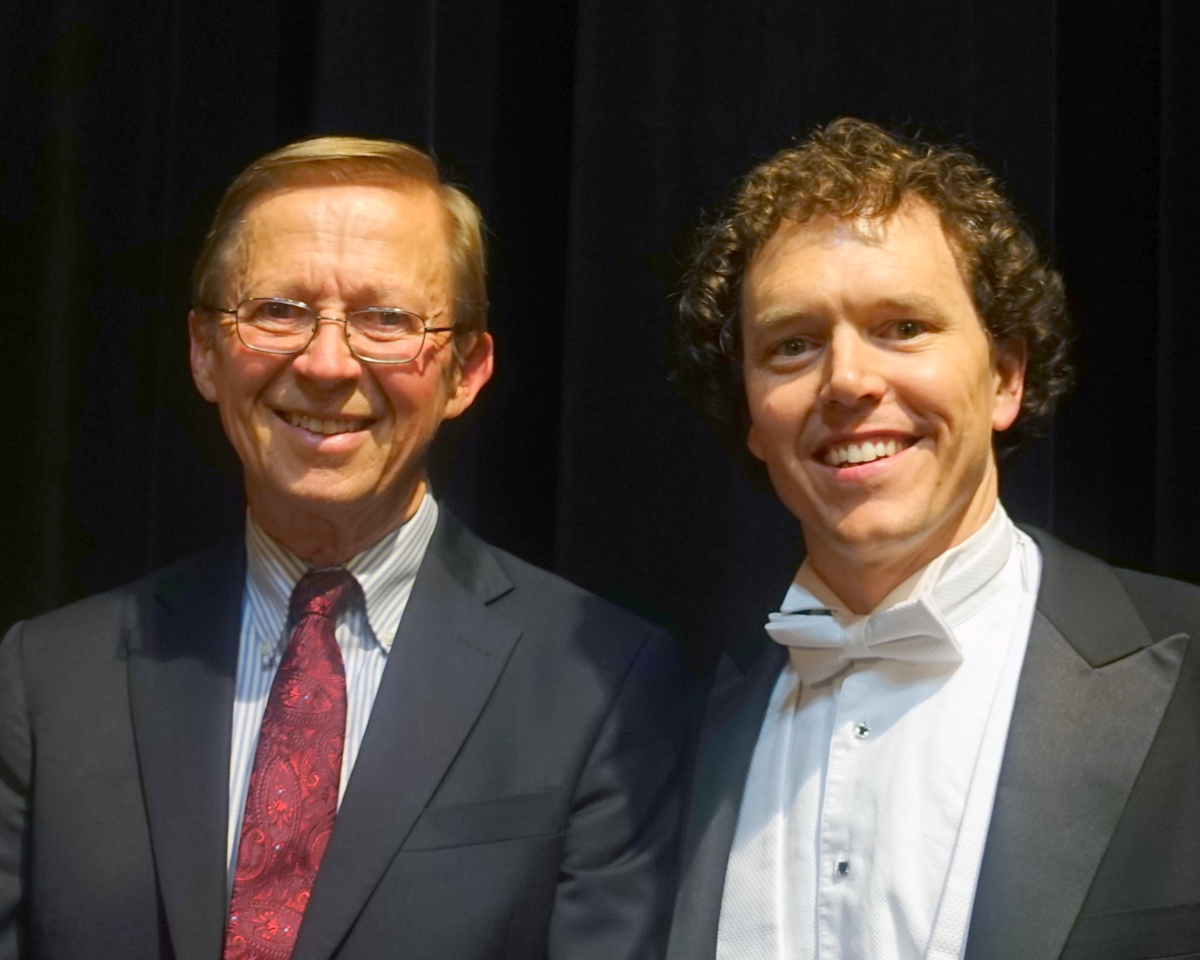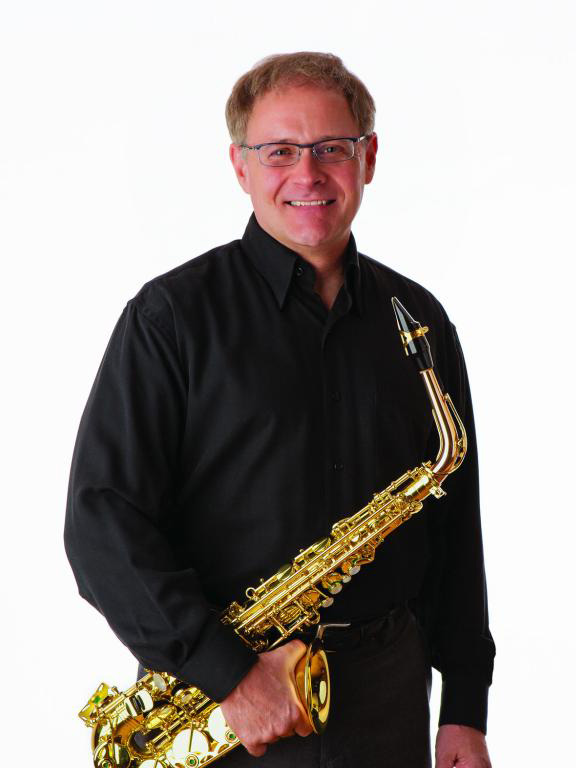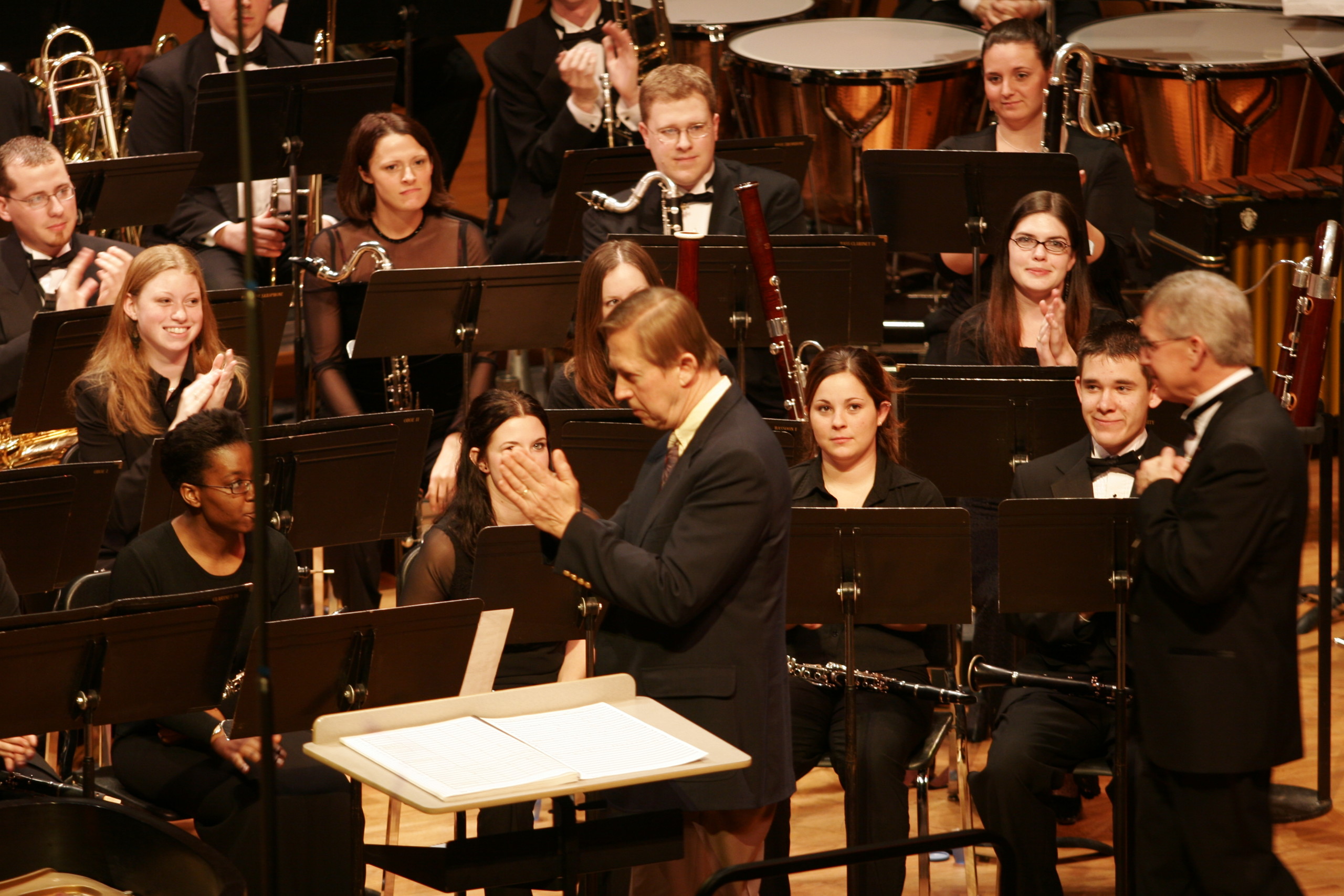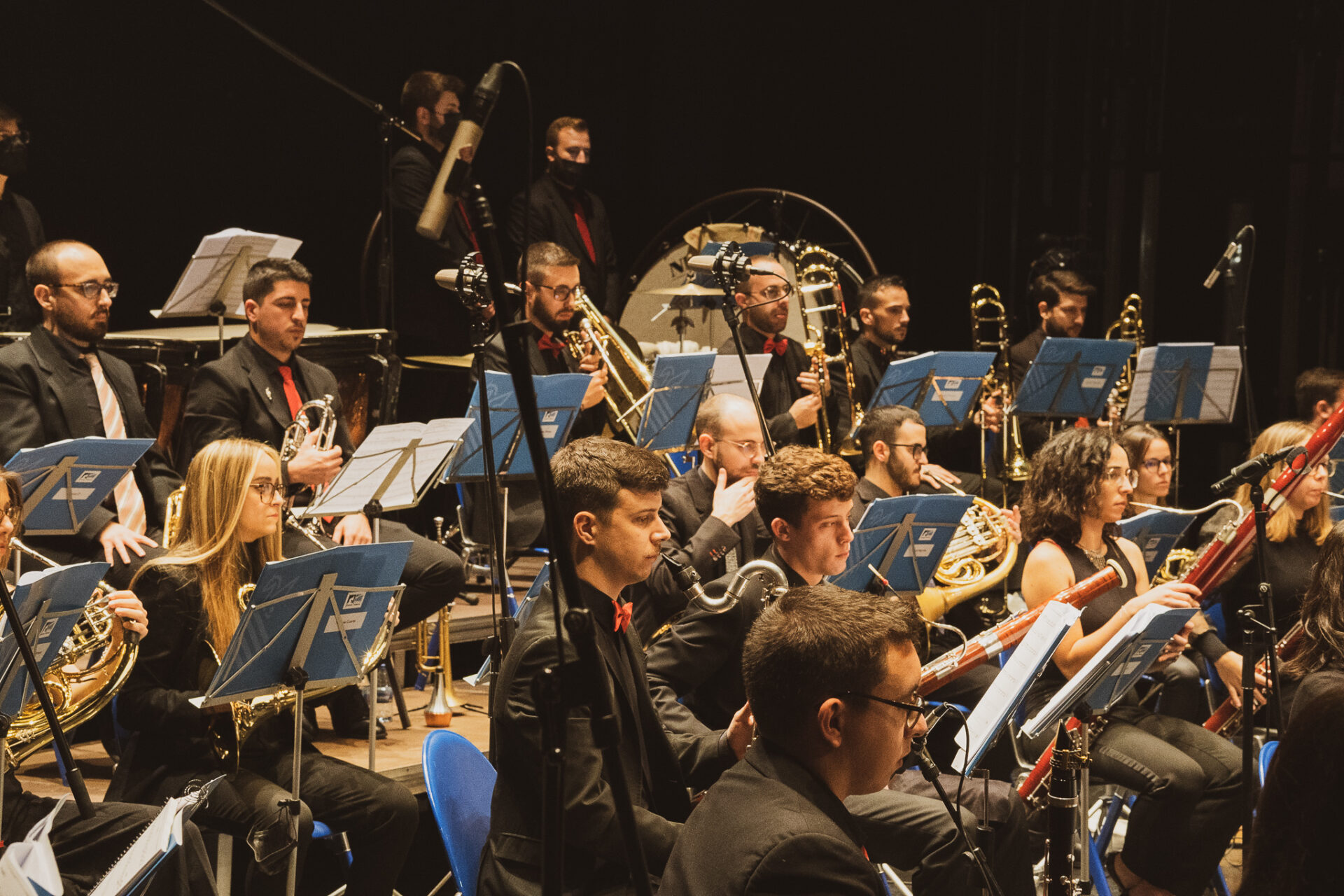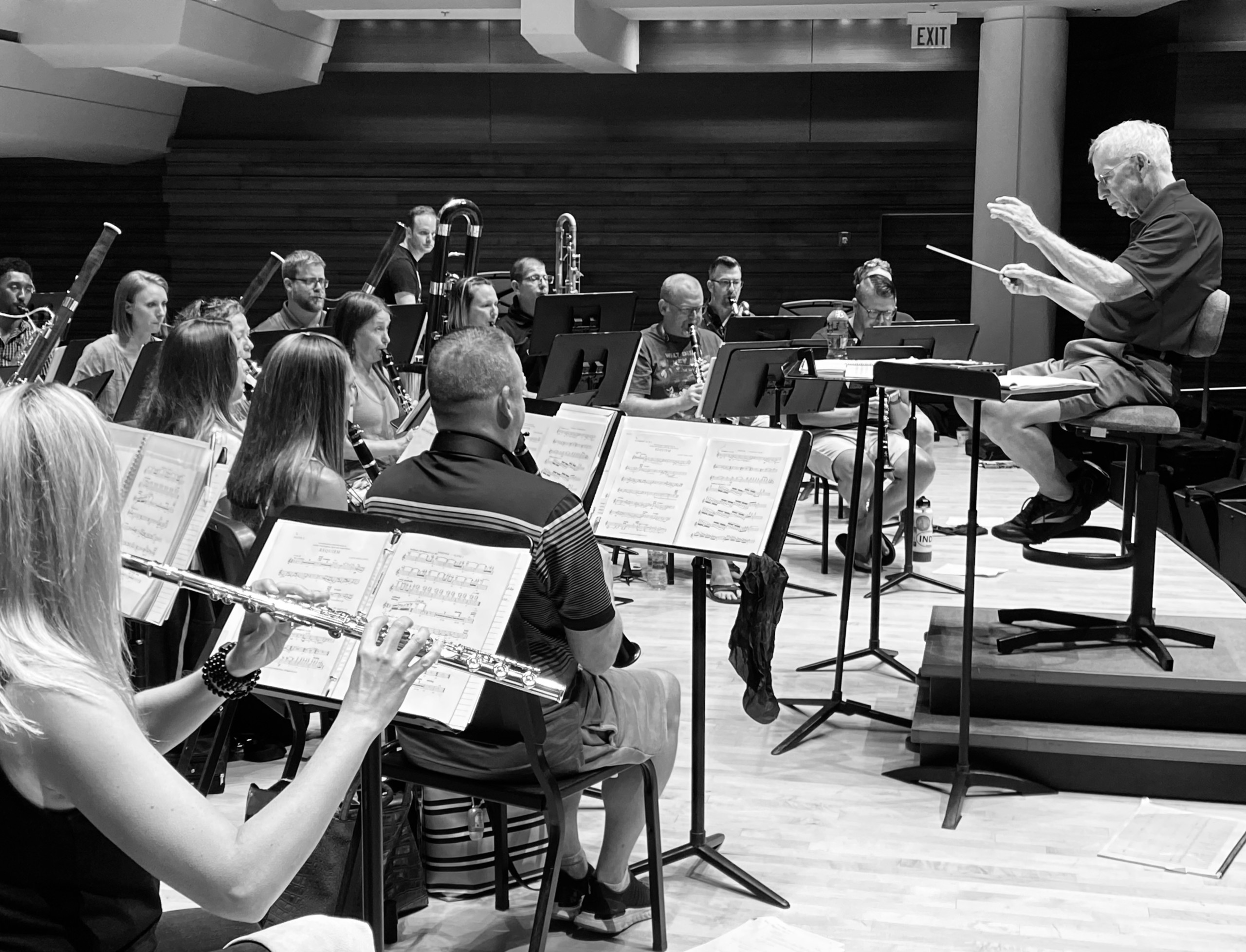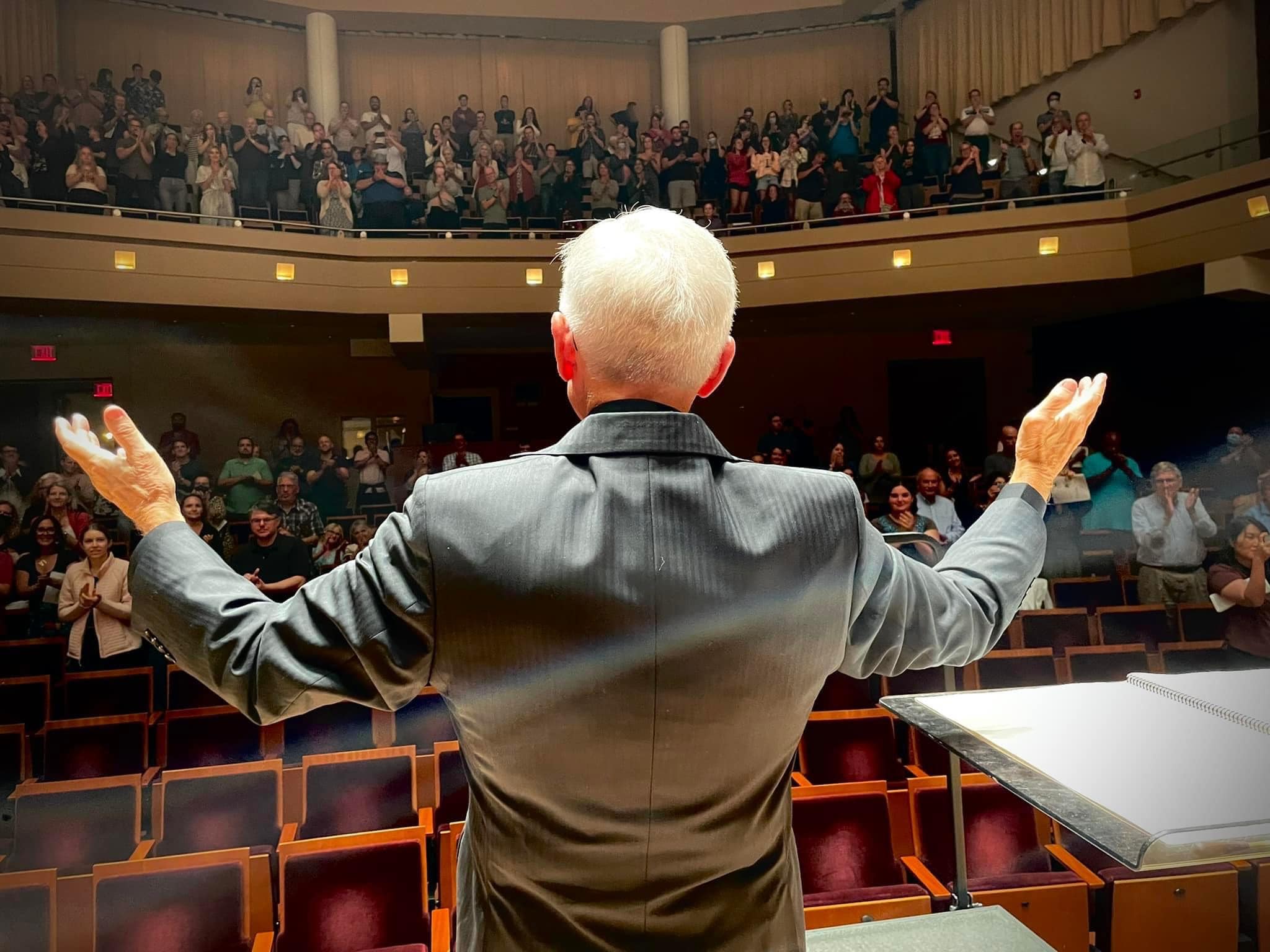Maslanka Weekly highlights excellent performances of David Maslanka’s music from around the web.
In 2000 David Maslanka said, “The 371 Four-Part Chorales by J.S. Bach have come a focal point for my study and meditation. These chorales are the models for counterpoint and harmonic movement used by every beginning music theory student. I had my first encounter with them as a freshman at the Oberlin Conservatory in 1961. Ten years ago I returned to singing and playing them as a daily warm-up for my composing time. Since then the chorales have become a deep well for me, a huge access to dream space. The feeling is one of opening an unmarked door in a nondescript building, and being suddenly thrust into a different world. The chorales are this mysterious door to other worlds.”
O Haupt voll Blut und Wunden (O Sacred Head Now Wounded) from The 371 Four-Part Chorales by J.S. Bach
This week, we look at three pieces of David’s music that were inspired by the chorale prelude O Haupt voll Blut und Wunden: Symphony No. 9, Hohner, and Tone Studies. Watch below to see this melody as it was harmonized by J.S. Bach.
More info
Symphony No. 9
According to Maslanka, “This work was commissioned by Dr. Stephen K. Steele of Illinois State University who gathered a consortium of over 40 conductors, ensembles, and individuals, here and abroad, to support the work. It is in four movements, with a duration of about 75 minutes. The symphony opens with a reading of the poem “Secrets” by W. S. Merwin, which is paralleled in the fourth movement by a reading of my brief Whale Story. Symphony No. 9 can be described as a large collection of instrumental songs which create a continuously moving tapestry of thoughts and images relating to the nature of memory, the life giving creative force of water, and compassion, forgiveness, and rest. The flow of the entire Symphony is toward the Chorale melody O Sacred Head Now Wounded at the end of the fourth movement. While the Symphony is of extended length it is not physically fatiguing to perform. Its high demand is for patience in pacing, and continuous attention by all ensemble members to each moment of musical sound.” Watch below as Sam Ormson leads the Mountain View High School Wind Ensemble in a breathtaking performance of the entirety of this large work with David Maslanka himself as Narrator.
More info
- Sam Ormson
- Mountain View High School Instrumental Music
- Symphony No. 9 @ davidmaslanka.com
Hohner
More info
- Alma College Percussion Studio
- Hohner @ davidmaslanka.com
Tone Studies
Tone Studies is a set of six pieces which are for the most part slow and quiet. Maslanka remarked that “There is no really fast music in the whole piece, and only two fortissimo passages. I chose the title Tone Studies because each movement, and in fact each moment, offers a large number of choices about quality of sound, choices that will evolve with deepening study. The key to successful performance for both pianist and saxophonist is patience – patience with tempi, patience with fermatas, patient and careful listening into tones produced by each instrument and by the two together. It is very easy to play without deep listening. This music asks and requires that you listen deeply. When you do, a special settled heart energy arises through the performance.”
The chorale melody O Sacred Head Now Wounded can be heard in the final movement. Watch below as Kaneda Asako, Alto Saxophone and Rika Kumai, Piano give a heartwarming performance of the entire piece.
More info
- Tone Studies @ davidmaslanka.com
We would love to hear from you! If you know of any outstanding performances of David Maslanka’s music on the web, please email us at maslankaweekly@maslanka.org.
